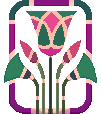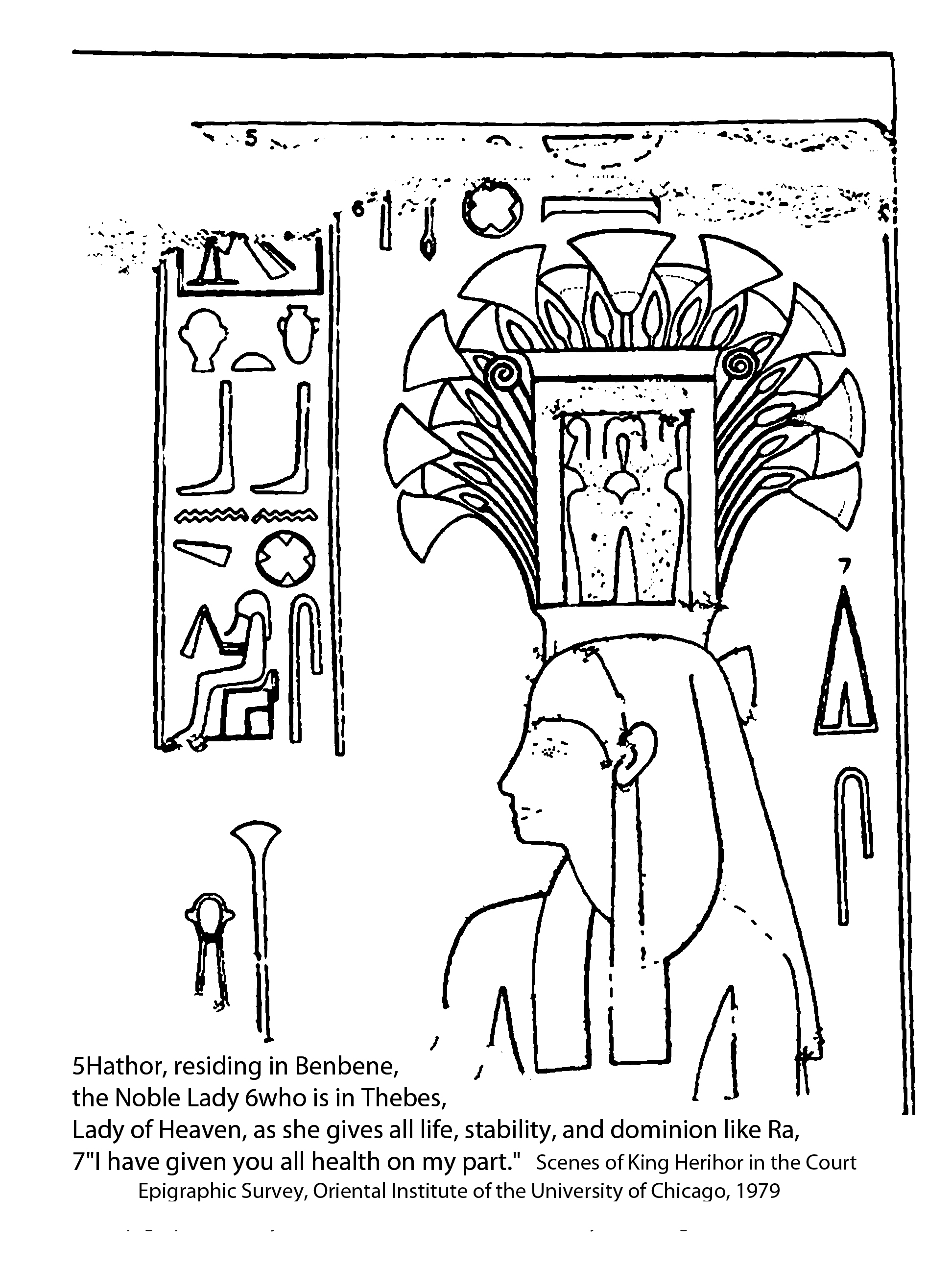
Monday, February 19, 2018
Unusual Crown of Hathor at Temple of Khonsu
7:33am
 |
By Hathor of the Temple of Khonsu:
5Hathor, residing in Benbene, the Noble Lady 6who is in Thebes, Lady of Heaven, as she gives all life, stability, and dominion like Ra,7"I have given you all health on my part."
From Plate 84, The Temple of Khonsu - Volume 1: Scenes of King Herihor in the Court
Epigraphic Survey, Oriental Institute of the University of Chicago, 1979
Footnote, page 18 (46 in the pdf)"
"On Benbene as a designation of the Temple of Khonsu or its site, see Kurt Sethe, Amun und die acht Urgotter von Hermopolis"
During the second half of Ramesses XI reign, High Priest of Amun Herihor ruled over the south from Thebes, limiting this Ramesses' power to Lower (Northern) Egypt. This was just before the end of the New Kingdom.
To me, this crown suggests Hathor as enabling lush growth. I wonder if this crown is a "one-of", or are there others? I looked in Dr. Richter's The Theology of Hathor of Dendera, and it isn't one of the many varieties of crowns in the Dendera Per Wer.
February 20, 2018 Update!
One esteemed colleague working on her doctorate corrected me, they are papyrus plants, NOT lilies. As the text refers to Hathor "residing in Benbene" (Benbene being a designation of the Temple of Khonsu), this crown refers to this temple, also. Herihor is "presenting the House (temple) to its lord, which is Khonsu. Hathor dwells in this house.
The choice of papyrus is significant. "In the hieroglyphic script a stylized papyrus stem wrote words for 'green'
and 'flourishing' (in Egyptian wadj)". (From _Papyrus_, by R. B. Parkinson, Stephen Quirke, Ute Wartenberg, and Bridget Leach, page 12)
"Because of its height and dense growth in thickets, the plant is a haven for
wildlife, especially birds. The wildlife and the luxuriant greenery of the
papyrus marshes made them the Egyptian equivalent of the European pastoral
landscape in art and literature. They also had a religious dimension,
symbolizing the emergence of the land from the primordial swamp, a site of
primeval power." (Ibid, page 11)
For instance, the "peristyle court and hypostyle hall of Luxor Temple present a veritable grove of papyrus bundle columns symbolic of the primeval marsh from which creation unfolded". (From _The Complete Temples of Ancient Egypt_, by Richard H. Wilkinson (Thames and Hudson, 2000), page 78) They understood the temple as
"the domain of the god as a created world in microcosm" (Ibid, page 76).
February 21, 2018 Thoughts...
Why is Hathor present while Herihor is presenting this Temple of Khonsu to Khonsu? Why does she reside within this temple? Because the "green and flourishing" aspects within the temple come from Hathor! Hence, her presence is necessary.